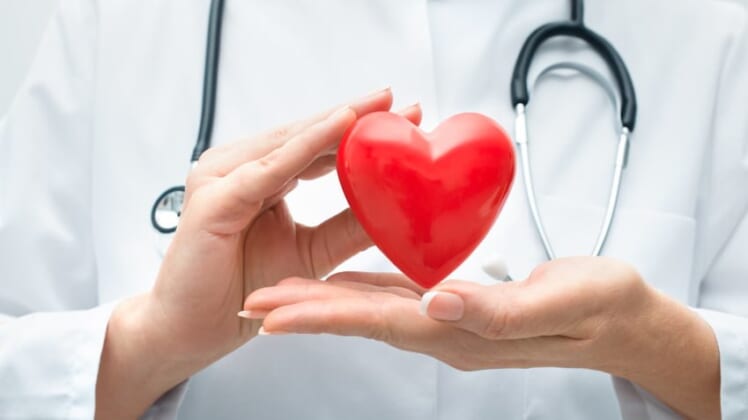
Before we talk about heart disease lets take some time to understand what the basics of this central organ and how it functions. Understanding this is an important precursor to understanding heart disease.
Clench your fist—that’s about the size of your heart. Located in the center of your chest, the heart beats about one hundred thousand times a day, pumping five to six quarts of blood per minute.
Once the blood receives oxygen from the lungs, the heart sends the blood from the aorta through the arteries and into the capillaries, which are smaller, thinner blood vessels. Then, once the capillaries have brought oxygen and nutrients to every cell in the body, the blood is redeposited into the veins, and from there it goes back to the heart for the cycle to begin again.
So what we have here is a plumbing system essentially, a smart pump with different connecting parts that circulates blood throughout the body. The heart itself is made up of four chambers—the two up top are called the atria, the two on the bottom are called the ventricles—connected by a set of valves. And the whole system is set in motion, or beats, thanks to the electrical impulses sent out by a small bundle of specialized cells in the right atrium that act as the heart’s natural pacemaker, causing the muscles of this organ to contract and relax.
Any malfunction of this blood pump is known as heart disease, of which one of the most common types is coronary artery disease. It is the No. 1 killer of both men and women in the United States this heart disease kills more nearly half a million Americans each year.
Coronary artery disease, also known as coronary heart disease, is a narrowing and obstruction of the coronary arteries, which are responsible for bringing oxygen and nutrients to the heart itself. As early as your teen years, fat deposits begin to develop in some of these arteries, and as time goes by, the fat deposits build up, ultimately creating an obstruction that begins to decrease the amount of blood to the heart and cause an inflammation as the artery tries to heal itself.
Over time the fat deposits in the arteries begin to harden, and you begin to get deposits of small platelets that compound the obstruction. All of this can lead not only to a significant narrowing of the arteries, but to blood clots that may either obstruct the artery or get dislodged and create further obstructions elsewhere in the plumbing system.
One of the consequences of this narrowing or total obstruction of the coronary artery is ischemia, which occurs when there is an insufficient supply of oxygenated blood for the heart muscle. Any activity—eating, excitement, or changes in temperature—can make the problem worse.
One of the most common symptoms of ischemia is angina, which is a discomfort, heaviness, pressure, numbness, or squeezing feeling in the chest. Sometimes it is mistaken for indigestion or heartburn. It is usually felt in the chest, but it can also migrate to the arms, especially the left shoulder. Other symptoms include shortness of breath, irregular heartbeats or palpitation, a very fast heartbeat, nausea, and sweating. If this ischemia is not corrected, if it lasts more than 30 minutes and does not get better, a heart attack may result.
In a heart attack, the heart muscle begins to fail, either through a very erratic electrical stimulation called an arrhythmia or by stopping altogether. It is important to recognize these symptoms because early intervention could save your life.
A doctor can tell you if you have coronary artery disease by discussing your symptoms, especially shortness of breath, taking your medical history, and looking at your risk factors, in particular, smoking, cholesterol, blood pressure, and sugar control. There are a host of diagnostic tests your doctor can do, such as an electrocardiogram (ECG or EKG); an exercise stress test; an ultrafast CAT scan, which looks for calcium deposits in your coronary artery; and cardiocatheterization, which can help determine the degree of obstruction of the artery.
If you are diagnosed with coronary artery disease, treatment is threefold. The first has to do with lifestyle changes, like quitting smoking, starting to exercise, and keeping to a low-fat, low-sodium, low-cholesterol diet.
The second aspect of treatment is medication, which may be needed to get your heart working more effectively. Other medication will be prescribed to reduce the cholesterol.
The third aspect of treatment has to do with procedures to help improve the blood flow through the coronaries. One possibility is a balloon angioplasty, in which a small balloon-tipped catheter is inserted into the coronary arteries and then inflated to open up the clogged artery. Another possibility is placing a small, metal stent inside the artery to keep it open and improve blood flow.
A heart bypass operation takes place when total replacement of the piece of the coronary that is obstructed becomes necessary.
